Error Handling
Errors Catching
Errors can be thrown by error end events or programmatically.
A thrown error MUST be caught by an error catch event, specifically using an error boundary event or an error event subprocess. Otherwise, it causes an exception.
Catching Error by Boundary Event
When an error event is caught, the activity on which the boundary event is defined is destroyed, also destroying all current executions within (concurrent activities, nested subprocesses, and so on). Process execution continues following the outgoing sequence flow of the boundary event.
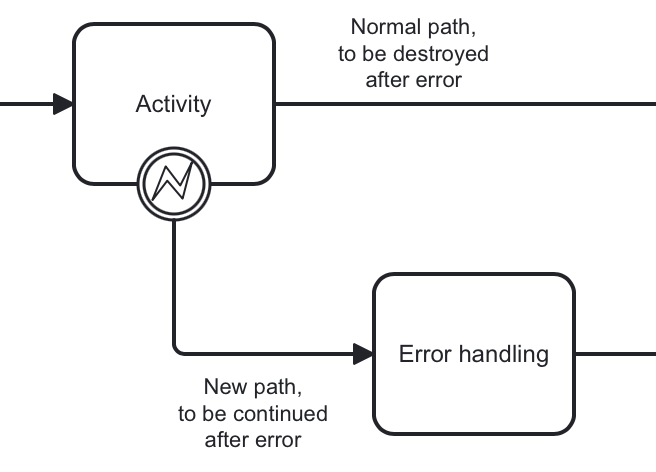
Event Subprocess Priority
Event subprocess has a priority over the error boundary event. So, when an error occurs, the subprocess starts, but the boundary error handler never be activated.
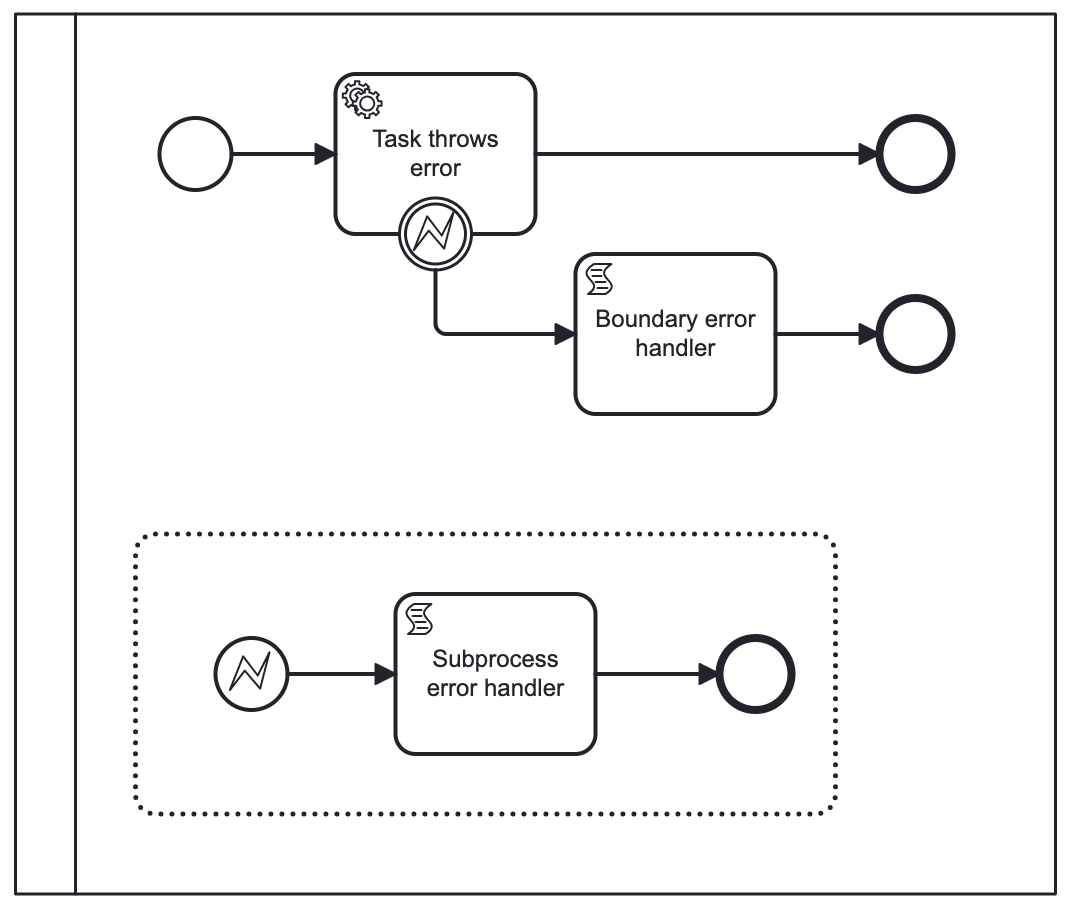
Error Propagation
Suppose, the process has parallel paths with call activities, each of them may throw an error. Then, it’s possible to use error boundary events without outgoing flows if there is an event subprocess for handling errors:
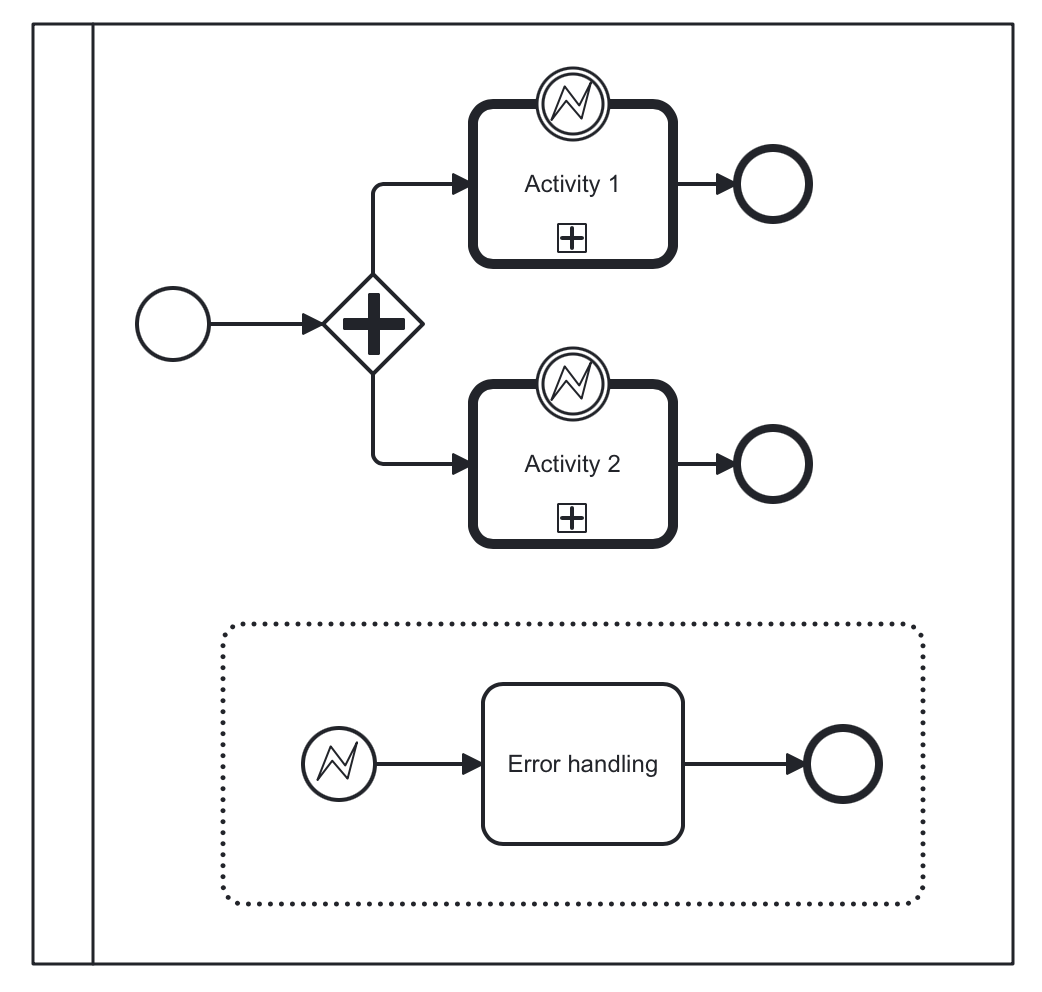
The error, thrown inside call activity will be propagated to the top-level process and caught by event subprocess.
Matching Errors
Usually, error event has a code. Sometimes the code can be omitted, then id parameter will be used.
Single error catching event
When there is only one error catching event in the given scope, it catches ALL errors with any codes.
In the example below, the single error catching event catches both errors with codes 1 and 2. If in the error catching event set parameter Error, it will be ignored.
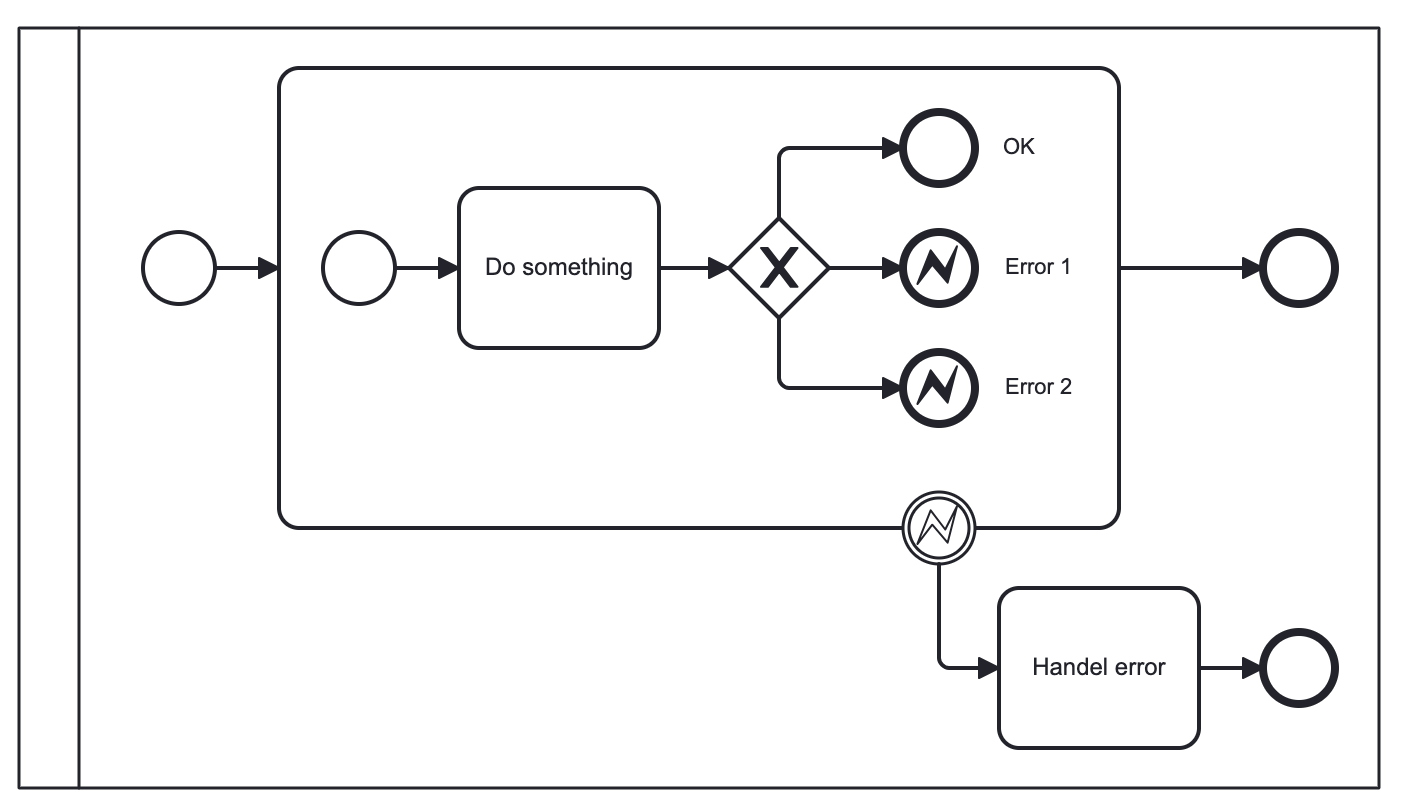
An event subprocess with error start event works the same way — it will catch any error.
Matched errors codes
In the other example, we can see designated error catching events for every type of errors:

Respectively, if error #1 occurs, the first catching evens will be activated, if error #2 — the second one.
|
The BPM engine considers the error events matching when they refer to the same error definition. |
Error code doesn’t match
When a code of thrown error doesn’t match any error catching event, the first defined error will be activated.
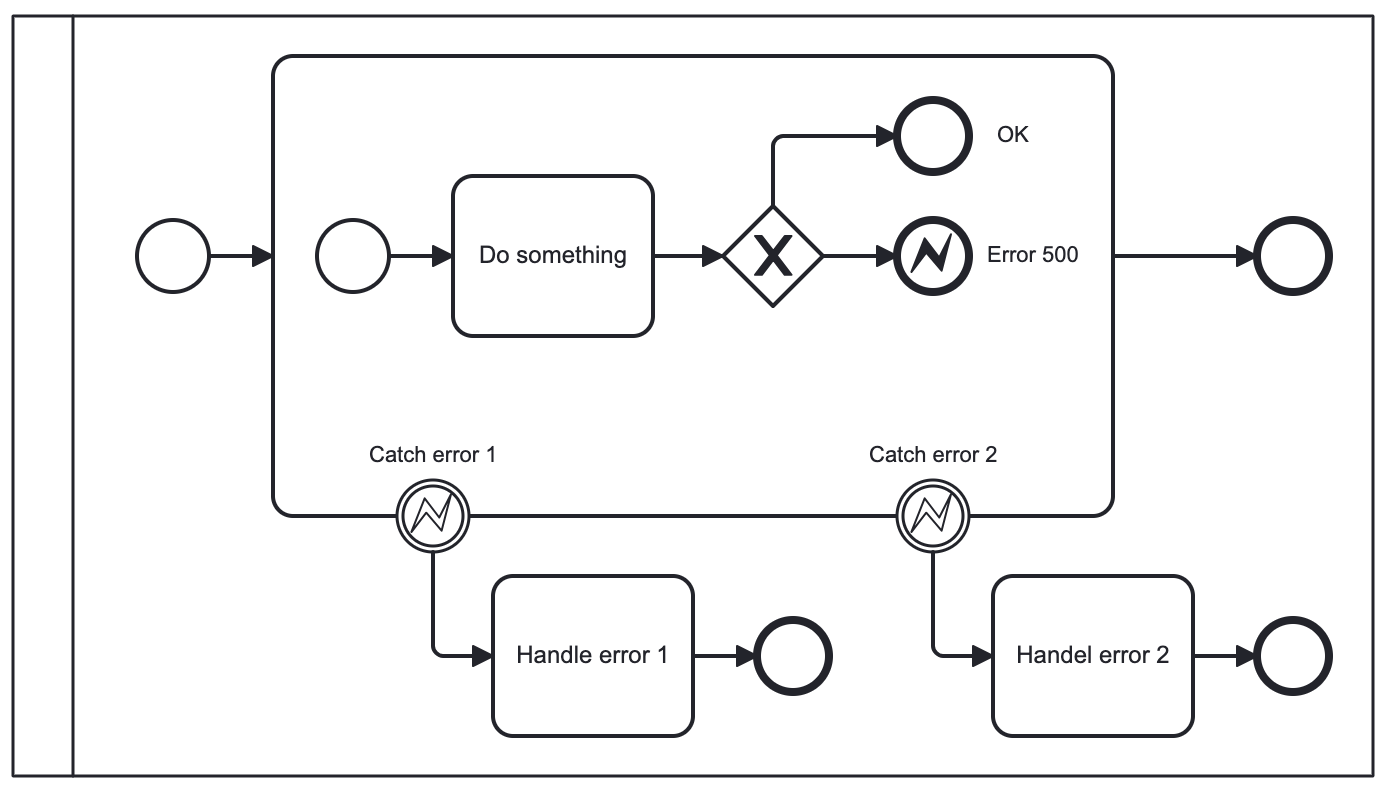
The first means here which of boundary events is higher in the XML file:
...
<boundaryEvent id="Event_02" name="Catch error 2"
attachedToRef="Activity_13z00xo"> (1)
<outgoing>Flow_06d3rwf</outgoing>
<errorEventDefinition id="ErrorEventDefinition_0w90u2d" />
</boundaryEvent>
<sequenceFlow id="Flow_1b1df9j" sourceRef="Event_01" targetRef="Activity_0tcie7m" />
<sequenceFlow id="Flow_1trubue" sourceRef="Activity_0tcie7m" targetRef="Event_1073oeg" />
<boundaryEvent id="Event_01" name="Catch error 1"
attachedToRef="Activity_13z00xo"> (2)
<outgoing>Flow_1b1df9j</outgoing>
<errorEventDefinition id="ErrorEventDefinition_1aum1e6" />
</boundaryEvent>
...| 1 | — Boundary event #2 defined first |
| 2 | — Boundary event #1 defined second |
So, in our case, catching event #2 will be activated when the code of thrown error is "500".
|
The same is applicable to boundary events attached to task or call activity. |
Errors without code
The parameter errorCode can be omitted. In this case, errorId will be used instead.
For example, thrown error has a code "green":
<error id="err_green" name="Error green" errorCode="green" />But catching event set to the error with id = "green" and without code:
<error id="green" name="Err1"/>Those errors will be matched.
Errors thrown programmatically
When the error is generated programmatically, it has only code but not id:
throw new BpmnError("500");